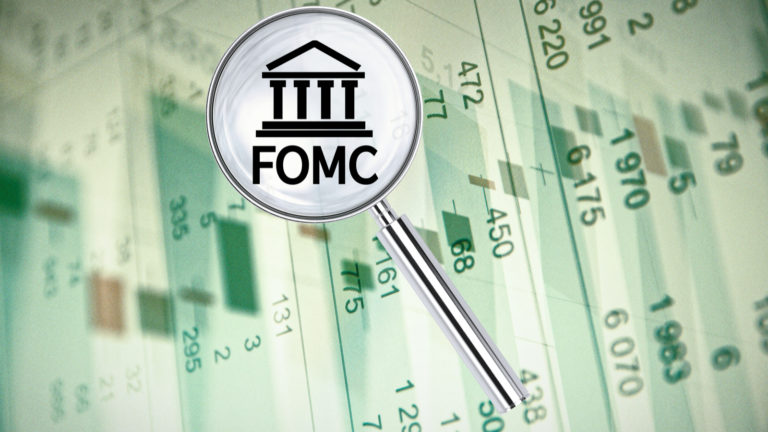Editor’s Note: Eric Fry here. Today, my InvestorPlace colleague Louis Navellier is here to discuss the outcome of this week’s Federal Open Market Committee (FOMC) meeting… and where investors will now be turning their attention.
Take it away, Louis…
Hello, Reader.
Leading up to the July Federal Open Market Committee (FOMC) meeting this week, pressure was mounting on the Fed to cut key interest rates.
Specifically, former New York Fed President Bill Dudley last Wednesday came out with a powerful Bloomberg Opinion article entitled “I Changed My Mind. The Fed Needs to Cut Rates Now.” Dudley said, “The facts have changed, so I’ve changed my mind. The Fed should cut, preferably at next week’s policy-making (FOMC) meeting.”
Dudley elaborated:
Wealthy households are still consuming, thanks to buoyant asset prices and mortgages refinanced at historically low long-term rates. But the rest have generally depleted what they managed to save from the government’s huge fiscal transfers, and they’re feeling the impact of higher rates on their credit cards and auto loans. Housing construction has faltered, as elevated borrowing costs undermine the economics of building new apartment complexes. The momentum generated by Biden’s investment initiatives appears to be fading.
His note that the majority of Americans are feeling the pinch of high interest rates, especially on auto loans and credit cards, was particularly interesting. The Philadelphia Fed recently reported that past due credit card balances after 60 days rose 2.59%. That’s up from a low of 1.1% back in 2021. The 30 and 90 days past due are now at their highest level since 2012, at 3.56% and 1.89%, respectively.
Alan Blinder, the former vice chairman of the Fed, wrote an opinion piece this week in The Wall Street Journal entitled “The Fed Should Cut Interest Rates This Week.” Blinder says that “Money is tight right now. With inflation in the 2.5% to 3% range, depending on how you measure it, the current federal-funds rate of 5.25% to 5.5% leaves the real interest rate – the interest rate adjusted for inflation – around 2.5% to 3%.
He also writes, “The Fed regularly declares itself to be data-dependent, and virtually everywhere you look – jobs, retail sales and more – the economy seems to be simmering down. The Fed has taken notice of that. While the stars look to be aligning for a September rate cut, why wait?”
So, in today, I’ll discuss what the Fed ultimately decided. I’ll also share where I expect investors to turn their attention to now that Wall Street has more clarity on the Fed’s next steps… and how we can profit from this shift in focus.
The Fed Leaves Rates Unchanged
The Fed unanimously decided on Wednesday to stand pat and leave key interest rates unchanged at 5.25% – 5.50%.
The good news is that the FOMC statement was very dovish. Specifically, it noted that “Recent indicators suggest that economic activity has continued to expand at a solid pace. Job gains have moderated, and the unemployment rate has moved up but remains low.”
Fed Chairman Jerome Powell also struck a dovish tone during his press conference. He stated that “the broad sense of the committee is that the economy is moving closer to the point at which it will be appropriate to reduce our policy rate” and that a “rate cut could be on the table in September.”
The broader market rallied strongly on the news, with the NASDAQ – which had fallen more than 3.5% last Wednesday – climbing 2.6% and outperforming both the S&P 500 and Dow. The 10-year Treasury yield dipped to 4.10%.
However, stocks turned sharply lower Thursday and today following a slew of disappointing economic data. On Thursday, the Department of Labor revealed that 249,000 weekly jobless claims were filed, up from 235,000 last week. This is the highest level since August 2023. Continuing unemployment claims are running at 1.877 million, which is the highest since November 2021. ADP also reported 122,000 private payroll jobs, which was less than the 150,000 expected and down from 155,000 in June.
Also on Thursday, the Institute of Supply Management (ISM) announced that its manufacturing index declined sharply to 46.8 in July, down from 48.5 in June. Since any reading under 50 signals a contraction, the ISM Manufacturing survey represented the 20th contraction in the past 21 months. In fact, 11 of the 16 industries surveyed contracted in July.
Then this morning, the Labor Department reported that only 114,000 payroll jobs were created in July, which was substantially below economists’ consensus estimate of 175,000. The unemployment rate rose to 4.3% in July, up from 4.1% in June. One reason behind the uptick in unemployment is that the labor force participation rate rose to 62.7% in July, up from 62.6% in June, so there are now more people in the workforce. In addition, the May and June payroll reports were revised down by a combined 29,000.
There is no doubt that there will be a rate cut in September, but the question now is by how much. Following the disastrous economic data, folks are calling for the Fed to cut key interest rates by 0.50% instead of by 0.25%. Given the continued decline in the two-year and 10-year Treasury yields and the fact that the yield curve is almost entirely inverted, I think the Fed needs to cut rates five times.
Turning Attention Back to Earnings
Now that Wall Street has more clarity on the Fed’s next steps, investors can shift their full attention back to the second-quarter earnings season
Thankfully, earnings season has been stunning so far. According to FactSet, 75% of S&P 500 companies that have reported earnings, and 78% have topped earnings estimates. The S&P 500 earnings growth rate stands at 11.5%, up from previous estimates for 8.9% earnings growth. Also important: Earnings are working. Companies that post positive earnings are being rewarded, while companies that announce weak results are being punished.
I’m pleased to say that even with this week’s gyrations, earnings are working for my Growth Investor companies. Just this week, 24 of my Growth Investor companies released their latest quarterly results. Nineteen topped earnings estimates, with many rallying higher in the wake of their positive numbers… even when the broader market pulled back.
Case in point: Coca-Cola Consolidated, Inc. (COKE) jumped more than 8% to a new 52-week high on Thursday following its strong earnings results, and then climbed more than 3% today.
The beverage manufacturer reported that second-quarter sales rose 3.3% year-over-year to $1.8 billion, up from $1.74 billion in the same quarter a year ago. Sparkling bottle/can sales accounted for $1.05 billion, while still bottle/can sales totaled $597.5 million. Operating earnings grew 11% year-over-year to $259.1 million, compared to $233.7 million in the second quarter of 2023. Adjusted earnings increased 11.7% year-over-year to $192.8 million.
I recommended COKE to my Growth Investor subscribers on December 21, 2023, and thanks to the stock’s post-earnings pop, the stock is now up 43% on my High-Growth Investment Buy List. That’s more than double the S&P 500’s 12.2% gain and the NASDAQ’s 11.7% increase and more than triple the Dow’s 5.9% rise over the same time period.
Coca-Cola might not be the most exciting investment, but its returns certainly are!
The reality is we’re in a market where it’s every stock for itself. So, your best bet for success right now is to focus on stocks with superior fundamentals. These are the companies that are most likely to post strong results and be rewarded by Wall Street – like Coca-Cola was this week.
If you’re not sure where to look, then consider Growth Investor. My Growth Investor Buy Lists are chock-full of fundamentally superior companies that are crushing earnings estimates and are positioned to break out as the new market leaders.
So, become a member of Growth Investor today. You’ll gain full access to my Growth Investor Buy Lists – including my three newest recommendations and Top Stocks list – as well as all my Monthly Issues, Weekly Updates and Special Market Podcasts.
Click here to join me at Growth Investor now.
Sincerely,
Louis Navellier
Editor, Market 360


